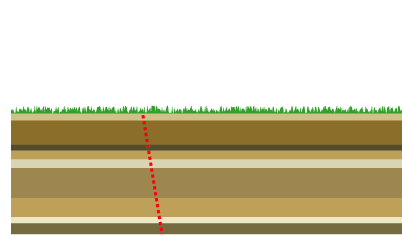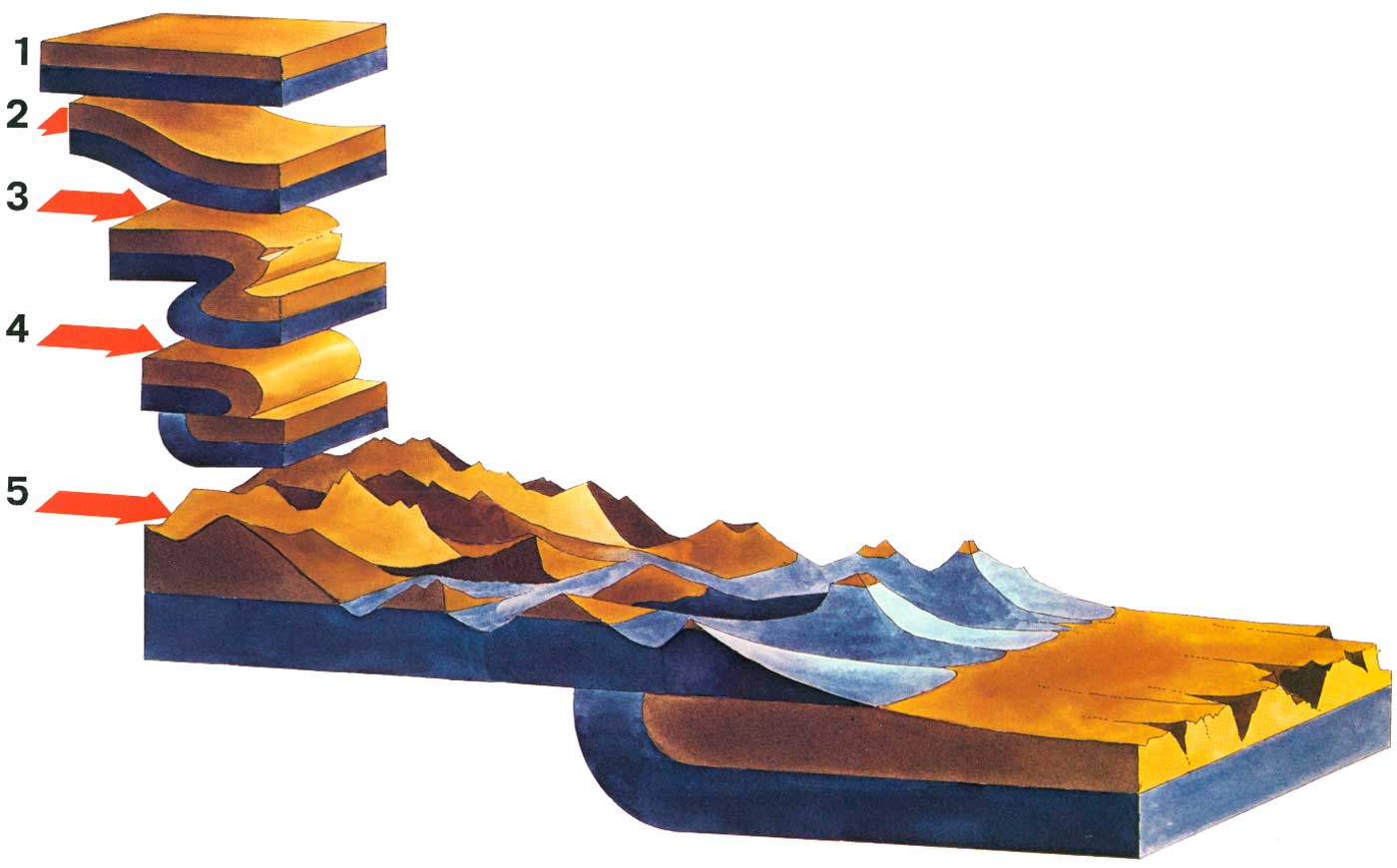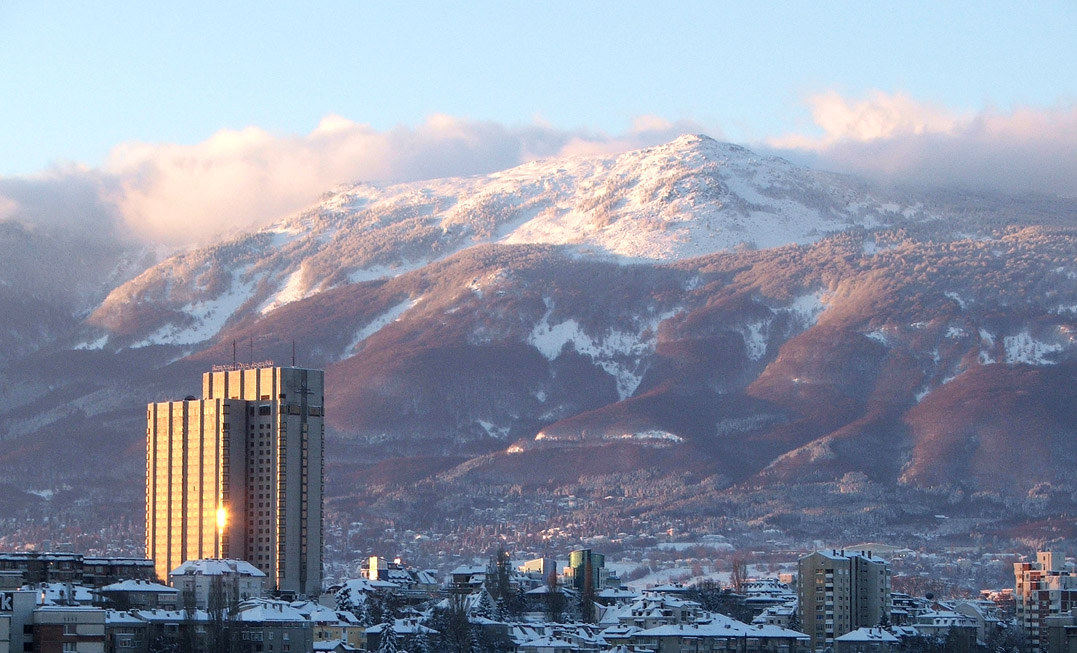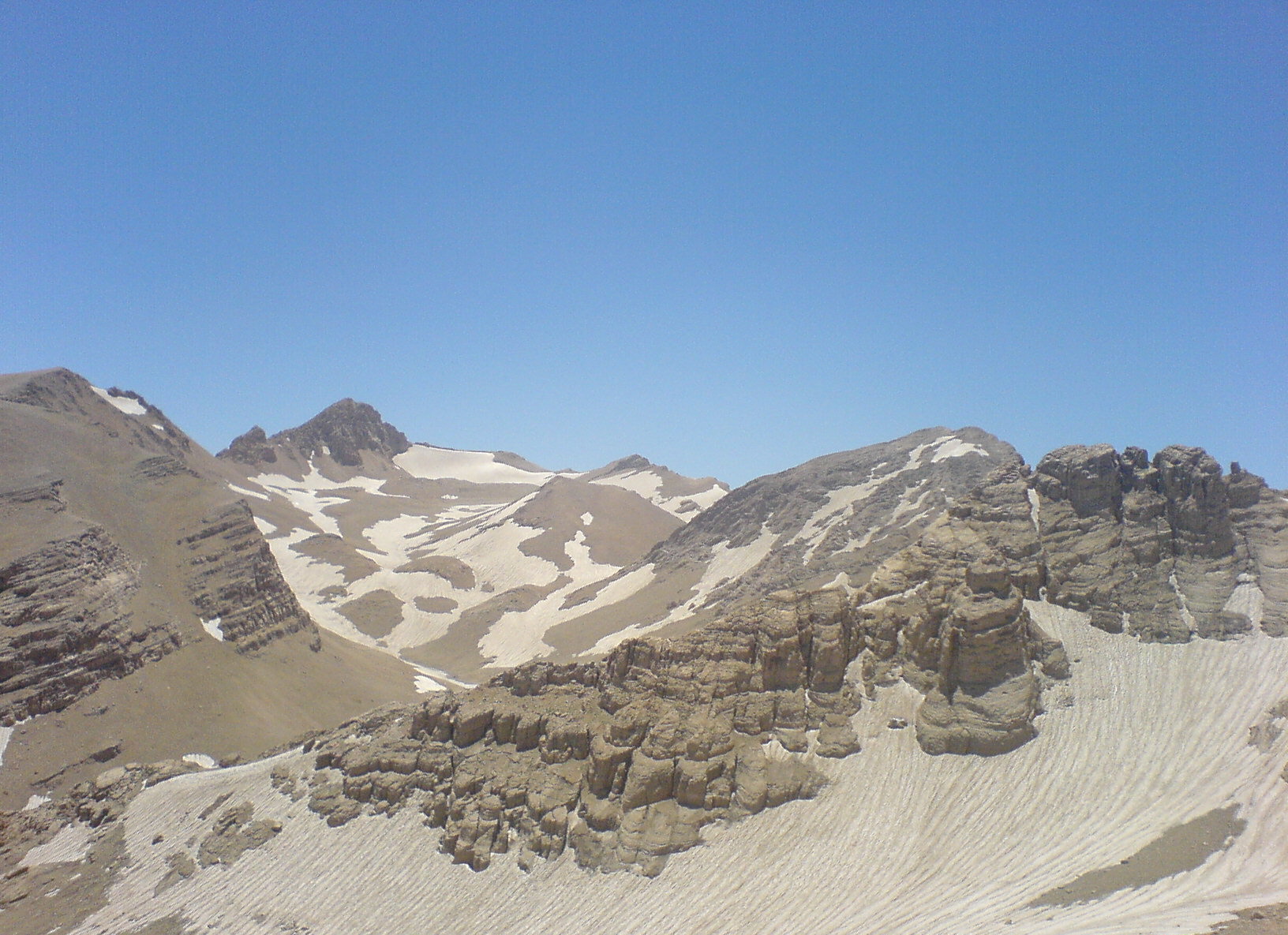Mountain Formation on:
[Wikipedia]
[Google]
[Amazon]

 Mountain formation refers to the geological processes that underlie the formation of
Mountain formation refers to the geological processes that underlie the formation of
 Movements of tectonic plates create
Movements of tectonic plates create  Most volcanoes occur in a band encircling the Pacific Ocean (the Pacific Ring of Fire), and in another that extends from the Mediterranean across Asia to join the Pacific band in the Indonesian Archipelago. The most important types of volcanic mountain are ''composite cones'' or ''stratovolcanoes'' (
Most volcanoes occur in a band encircling the Pacific Ocean (the Pacific Ring of Fire), and in another that extends from the Mediterranean across Asia to join the Pacific band in the Indonesian Archipelago. The most important types of volcanic mountain are ''composite cones'' or ''stratovolcanoes'' (
 When plates collide or undergo
When plates collide or undergo

 When a fault block is raised or tilted, block mountains can result. Higher blocks are called '' horsts'' and troughs are called ''
When a fault block is raised or tilted, block mountains can result. Higher blocks are called '' horsts'' and troughs are called ''
NASA Goddard Planetary Geodynamics Laboratory
* ttps://web.archive.org/web/20100210000748/http://projects.crustal.ucsb.edu/understanding/globe/globe.html Rotating globe showing areas of earthquake activity {{Tectonic plates . . Geological processes Plate tectonics

 Mountain formation refers to the geological processes that underlie the formation of
Mountain formation refers to the geological processes that underlie the formation of mountain
A mountain is an elevated portion of the Earth's crust, generally with steep sides that show significant exposed bedrock. Although definitions vary, a mountain may differ from a plateau in having a limited summit area, and is usually higher t ...
s. These processes are associated with large-scale movements of the Earth's crust ( tectonic plates). Folding, faulting, volcanic activity
Volcanism, vulcanism or volcanicity is the phenomenon of eruption of molten rock (magma) onto the surface of the Earth or a solid-surface planet or moon, where lava, pyroclastics, and volcanic gases erupt through a break in the surface called a ...
, igneous intrusion
In geology, an igneous intrusion (or intrusive body or simply intrusion) is a body of intrusive igneous rock that forms by crystallization of magma slowly cooling below the surface of the Earth. Intrusions have a wide variety of forms and com ...
and metamorphism
Metamorphism is the transformation of existing rock (the protolith) to rock with a different mineral composition or texture. Metamorphism takes place at temperatures in excess of , and often also at elevated pressure or in the presence of ...
can all be parts of the orogenic process of mountain building. The formation of mountains is not necessarily related to the geological structures found on it.
The understanding of specific landscape features in terms of the underlying tectonic processes is called '' tectonic geomorphology'', and the study of geologically young or ongoing processes is called '' neotectonics''.
From the late 18th century until its replacement by plate tectonics
Plate tectonics (from the la, label= Late Latin, tectonicus, from the grc, τεκτονικός, lit=pertaining to building) is the generally accepted scientific theory that considers the Earth's lithosphere to comprise a number of large t ...
in the 1960s, geosyncline theory
A geosyncline (originally called a geosynclinal) is an obsolete geological concept to explain orogens, which was developed in the late 19th and early 20th centuries, before the theory of plate tectonics was envisaged. Şengör (1982), p. 11 A ge ...
was used to explain much mountain-building.
Types of mountains
There are five main types of mountains: volcanic, fold, plateau, fault-block and dome. A more detailed classification useful on a local scale predates plate tectonics and adds to these categories.Volcanic mountains
 Movements of tectonic plates create
Movements of tectonic plates create volcano
A volcano is a rupture in the crust of a planetary-mass object, such as Earth, that allows hot lava, volcanic ash, and gases to escape from a magma chamber below the surface.
On Earth, volcanoes are most often found where tectonic plates ...
es along the plate boundaries, which erupt and form mountains. A ''volcanic arc system'' is a series of volcanoes that form near a subduction
Subduction is a geological process in which the oceanic lithosphere is recycled into the Earth's mantle at convergent boundaries. Where the oceanic lithosphere of a tectonic plate converges with the less dense lithosphere of a second plate, ...
zone where the crust of a sinking oceanic plate melts and drags water down with the subducting crust.
 Most volcanoes occur in a band encircling the Pacific Ocean (the Pacific Ring of Fire), and in another that extends from the Mediterranean across Asia to join the Pacific band in the Indonesian Archipelago. The most important types of volcanic mountain are ''composite cones'' or ''stratovolcanoes'' (
Most volcanoes occur in a band encircling the Pacific Ocean (the Pacific Ring of Fire), and in another that extends from the Mediterranean across Asia to join the Pacific band in the Indonesian Archipelago. The most important types of volcanic mountain are ''composite cones'' or ''stratovolcanoes'' (Vesuvius
Mount Vesuvius ( ; it, Vesuvio ; nap, 'O Vesuvio , also or ; la, Vesuvius , also , or ) is a somma- stratovolcano located on the Gulf of Naples in Campania, Italy, about east of Naples and a short distance from the shore. It is one of ...
, Kilimanjaro
Mount Kilimanjaro () is a dormant volcano in Tanzania. It has three volcanic cones: Kibo, Mawenzi, and Shira. It is the highest mountain in Africa and the highest free-standing mountain above sea level in the world: above sea level and abo ...
and Mount Fuji
, or Fugaku, located on the island of Honshū, is the highest mountain in Japan, with a summit elevation of . It is the second-highest volcano located on an island in Asia (after Mount Kerinci on the island of Sumatra), and seventh-highes ...
are examples) and ''shield volcanoes'' (such as Mauna Loa
Mauna Loa ( or ; Hawaiian: ; en, Long Mountain) is one of five volcanoes that form the Island of Hawaii in the U.S. state of Hawaii in the Pacific Ocean. The largest subaerial volcano (as opposed to subaqueous volcanoes) in both mass and ...
on Hawaii, a hotspot
Hotspot, Hot Spot or Hot spot may refer to:
Places
* Hot Spot, Kentucky, a community in the United States
Arts, entertainment, and media Fictional entities
* Hot Spot (comics), a name for the DC Comics character Isaiah Crockett
* Hot Spot (Tra ...
volcano).
A shield volcano has a gently sloping cone due to the low viscosity of the emitted material, primarily basalt
Basalt (; ) is an aphanitic (fine-grained) extrusive igneous rock formed from the rapid cooling of low-viscosity lava rich in magnesium and iron (mafic lava) exposed at or very near the surface of a rocky planet or moon. More than 90% of a ...
. Mauna Loa
Mauna Loa ( or ; Hawaiian: ; en, Long Mountain) is one of five volcanoes that form the Island of Hawaii in the U.S. state of Hawaii in the Pacific Ocean. The largest subaerial volcano (as opposed to subaqueous volcanoes) in both mass and ...
is the classic example, with a slope of 4°-6°. (The relation between slope and viscosity falls under the topic of angle of repose.) The composite volcano or stratovolcano has a more steeply rising cone (33°-40°), due to the higher viscosity of the emitted material, and eruptions are more violent and less frequent than for shield volcanoes. Besides the examples already mentioned are Mount Shasta
Mount Shasta ( Shasta: ''Waka-nunee-Tuki-wuki''; Karuk: ''Úytaahkoo'') is a potentially active volcano at the southern end of the Cascade Range in Siskiyou County, California. At an elevation of , it is the second-highest peak in the Cascade ...
, Mount Hood
Mount Hood is a potentially active stratovolcano in the Cascade Volcanic Arc. It was formed by a subduction zone on the Pacific coast and rests in the Pacific Northwest region of the United States. It is located about east-southeast of Portl ...
and Mount Rainier
Mount Rainier (), indigenously known as Tahoma, Tacoma, Tacobet, or təqʷubəʔ, is a large active stratovolcano in the Cascade Range of the Pacific Northwest, located in Mount Rainier National Park about south-southeast of Seattle. With a ...
. Vitosha
Vitosha ( bg, Витоша ), the ancient ''Scomius'' or ''Scombrus'', is a mountain massif, on the outskirts of Sofia, the capital of Bulgaria. Vitosha is one of the symbols of Sofia and the closest site for hiking, alpinism and skiing. Conve ...
- the domed mountain next to Sofia
Sofia ( ; bg, София, Sofiya, ) is the Capital city, capital and List of cities and towns in Bulgaria, largest city of Bulgaria. It is situated in the Sofia Valley at the foot of the Vitosha mountain in the western parts of the country. ...
, capital of Bulgaria
Bulgaria (; bg, България, Bǎlgariya), officially the Republic of Bulgaria,, ) is a country in Southeast Europe. It is situated on the eastern flank of the Balkans, and is bordered by Romania to the north, Serbia and North Mac ...
, is also formed by volcanic activity
Volcanism, vulcanism or volcanicity is the phenomenon of eruption of molten rock (magma) onto the surface of the Earth or a solid-surface planet or moon, where lava, pyroclastics, and volcanic gases erupt through a break in the surface called a ...
.
Fold mountains
subduction
Subduction is a geological process in which the oceanic lithosphere is recycled into the Earth's mantle at convergent boundaries. Where the oceanic lithosphere of a tectonic plate converges with the less dense lithosphere of a second plate, ...
(that is – ride one over another), the plates tend to buckle and fold, forming mountains. Most of the major continental mountain ranges are associated with thrusting and folding or orogenesis. Examples are the Balkan Mountains
The Balkan mountain range (, , known locally also as Stara planina) is a mountain range in the eastern part of the Balkan Peninsula in Southeastern Europe. The range is conventionally taken to begin at the peak of Vrashka Chuka on the border be ...
, the Jura and the Zagros
The Zagros Mountains ( ar, جبال زاغروس, translit=Jibal Zaghrus; fa, کوههای زاگرس, Kuh hā-ye Zāgros; ku, چیاکانی زاگرۆس, translit=Çiyakani Zagros; Turkish: ''Zagros Dağları''; Luri: ''Kuh hā-ye Zāgro ...
mountains.
Block mountains
graben
In geology, a graben () is a depressed block of the crust of a planet or moon, bordered by parallel normal faults.
Etymology
''Graben'' is a loan word from German, meaning 'ditch' or 'trench'. The word was first used in the geologic contex ...
s''. A spreading apart of the surface causes tensional forces. When the tensional forces are strong enough to cause a plate to split apart, it does so such that a center block drops down relative to its flanking blocks.
An example of this is the Sierra Nevada Range, where delamination created a block 650 km long and 80 km wide that consists of many individual portions tipped gently west, with east facing slips rising abruptly to produce the highest mountain front in the continental United States.
Another good example is the Rila
Rila ( bg, Рила, ) is the highest mountain range of Bulgaria, the Balkan Peninsula and Southeast Europe. It is situated in southwestern Bulgaria and forms part of the Rila– Rhodope Massif. The highest summit is Musala at an elevation of 2, ...
- Rhodope mountain Massif
In geology, a massif ( or ) is a section of a planet's crust that is demarcated by faults or flexures. In the movement of the crust, a massif tends to retain its internal structure while being displaced as a whole. The term also refers to a ...
in Bulgaria
Bulgaria (; bg, България, Bǎlgariya), officially the Republic of Bulgaria,, ) is a country in Southeast Europe. It is situated on the eastern flank of the Balkans, and is bordered by Romania to the north, Serbia and North Mac ...
, Southeast Europe
Southeast Europe or Southeastern Europe (SEE) is a geographical subregion of Europe, consisting primarily of the Balkans. Sovereign states and territories that are included in the region are Albania, Bosnia and Herzegovina, Bulgaria, Croatia (a ...
, including the well defined horsts of Belasitsa
Belasica (Macedonian and Bulgarian: , also translit. ''Belasitsa'' or ''Belasitza'', Ottoman Turkish: بلش Turkish: ''Beleş''), Belles ( el, Μπέλλες, ''Bélles'') or Kerkini (, ''Kerkíni'';), is a mountain range in the region of M ...
(linear horst), Rila mountain (vaulted domed shaped horst) and Pirin mountain - a horst forming a massive anticline
In structural geology, an anticline is a type of fold that is an arch-like shape and has its oldest beds at its core, whereas a syncline is the inverse of an anticline. A typical anticline is convex up in which the hinge or crest is the ...
situated between the complex graben
In geology, a graben () is a depressed block of the crust of a planet or moon, bordered by parallel normal faults.
Etymology
''Graben'' is a loan word from German, meaning 'ditch' or 'trench'. The word was first used in the geologic contex ...
valleys of Struma and that of Mesta.
Uplifted passive margins
Unlike orogenic mountains there is no widely acceptedgeophysical
Geophysics () is a subject of natural science concerned with the physical processes and physical properties of the Earth and its surrounding space environment, and the use of quantitative methods for their analysis. The term ''geophysics'' so ...
model that explains elevated passive continental margins such as the Scandinavian Mountains
The Scandinavian Mountains or the Scandes is a mountain range that runs through the Scandinavian Peninsula. The western sides of the mountains drop precipitously into the North Sea and Norwegian Sea, forming the fjords of Norway, whereas to the ...
, Eastern Greenland, the Brazilian Highlands
The Brazilian Highlands or Brazilian Plateau ( pt, Planalto Brasileiro) are an extensive geography, geographical region, covering most of the eastern, southern and central portions of Brazil, in all approximately half of the country's land area, ...
or Australia's Great Dividing Range.
Different elevated passive continental margins most likely share the same mechanism of uplift. This mechanism is possibly related to far-field stresses in Earth's lithosphere
A lithosphere () is the rigid, outermost rocky shell of a terrestrial planet or natural satellite. On Earth, it is composed of the crust and the portion of the upper mantle that behaves elastically on time scales of up to thousands of years ...
. According to this view elevated passived margins can be likened to giant anticlinal Anticlinal may refer to:
*Anticline, in structural geology, an anticline is a fold that is convex up and has its oldest beds at its core.
*Anticlinal, in stereochemistry, a torsion angle between 90° to 150°, and –90° to –150°; see Alkane_st ...
lithospheric fold
Fold, folding or foldable may refer to:
Arts, entertainment, and media
* ''Fold'' (album), the debut release by Australian rock band Epicure
*Fold (poker), in the game of poker, to discard one's hand and forfeit interest in the current pot
*Above ...
s, where folding is caused by horizontal compression acting on a thin to thick crust transition zone (as are all passive margins).Løseth and Hendriksen 2005
Models
Hotspot volcanoes
Hotspots are supplied by a magma source in the Earth's mantle called amantle plume
A mantle plume is a proposed mechanism of convection within the Earth's mantle, hypothesized to explain anomalous volcanism. Because the plume head partially melts on reaching shallow depths, a plume is often invoked as the cause of volcanic hot ...
. Although originally attributed to a melting of subducted oceanic crust, recent evidence belies this connection. The mechanism for plume formation remains a research topic.
Fault blocks
Several movements of the Earth's crust that lead to mountains are associated with faults. These movements actually are amenable to analysis that can predict, for example, the height of a raised block and the width of an intervening rift between blocks using therheology
Rheology (; ) is the study of the flow of matter, primarily in a fluid (liquid or gas) state, but also as "soft solids" or solids under conditions in which they respond with plastic flow rather than deforming elastically in response to an appli ...
of the layers and the forces of isostasy
Isostasy (Greek ''ísos'' "equal", ''stásis'' "standstill") or isostatic equilibrium is the state of gravitational equilibrium between Earth's crust (or lithosphere) and mantle such that the crust "floats" at an elevation that depends on it ...
. Early bent plate models predicting fractures and fault movements have evolved into today's kinematic and flexural models.
See also
* * * * * * *References
External links
NASA Goddard Planetary Geodynamics Laboratory
* ttps://web.archive.org/web/20100210000748/http://projects.crustal.ucsb.edu/understanding/globe/globe.html Rotating globe showing areas of earthquake activity {{Tectonic plates . . Geological processes Plate tectonics